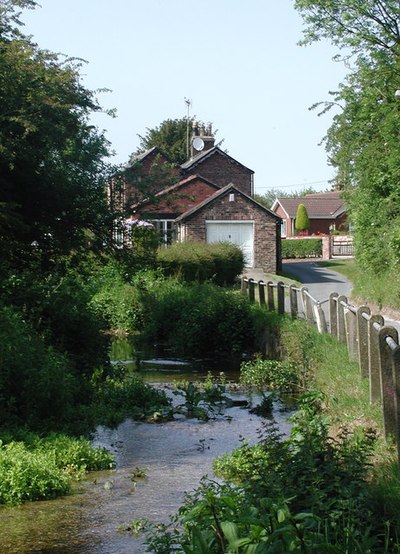
The Great Wold Valley is the largest and broadest of the valleys cutting into the Yorkshire Wolds in northern England. It carries the Gypsey Race, an intermittent stream, which runs from its source near Wharram-le-Street eastwards along and through the northern Yorkshire Wolds to reach the sea at Bridlington.
It is known that the Great Wold Valley was an important place of worship during Neolithic times and there are a number of scheduled monuments in the valley.[1] There are two dramatic right angle bends in the course of the Gypsey Race, one turning to the south at Burton Fleming then another turning eastwards again at Rudston. This intermittent and irregular watercourse is believed to be affected by a siphoning action in underground reservoirs and can come into flood apparently regardless of recent rainfall in the local vicinity. This seemingly 'magical' property is thought to be responsible for the number of significant Neolithic sites along its course, including the Rudston Monolith and the ancient burial mounds at Willy Howe, Duggleby Howe and Wold Newton. Howe, in this case a topographic name from Middle English, originated with the Old Norse word haugr meaning a small hill or a man-made mound or barrow.[2]
- ^ Wright, Geoffrey N. (1976). Yorkshire. The East Riding. London: Batsford. ISBN 0-7134-3102-4.
- ^ Guide to Scandinavian origins of place names in Britain Archived 2013-01-14 at the Wayback Machine